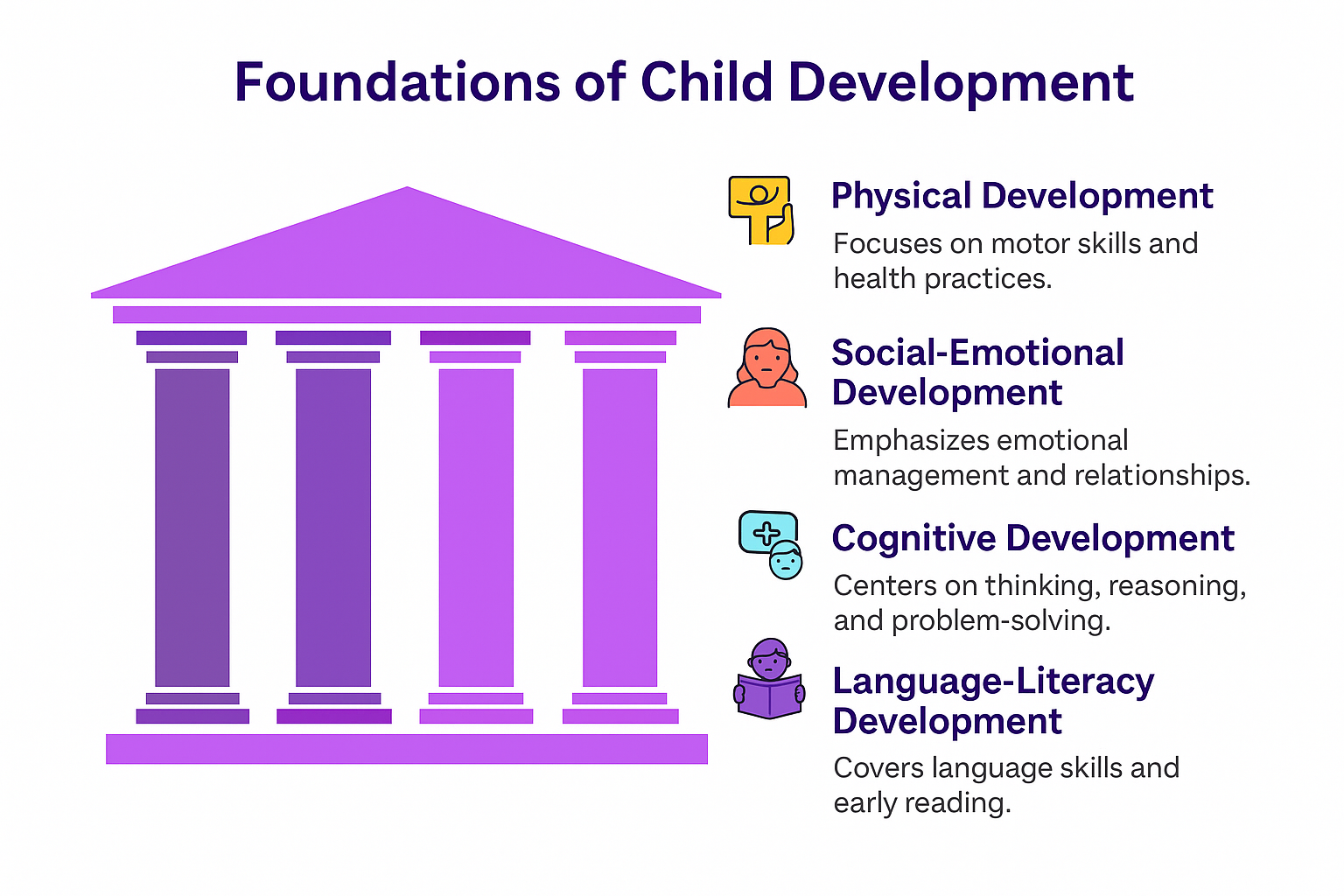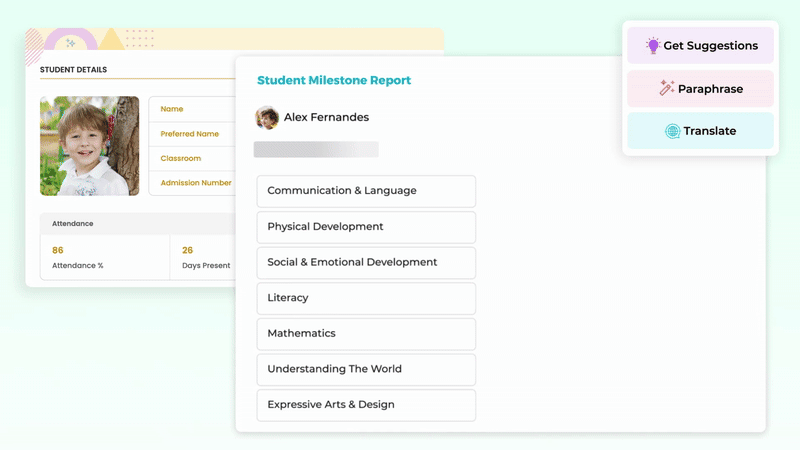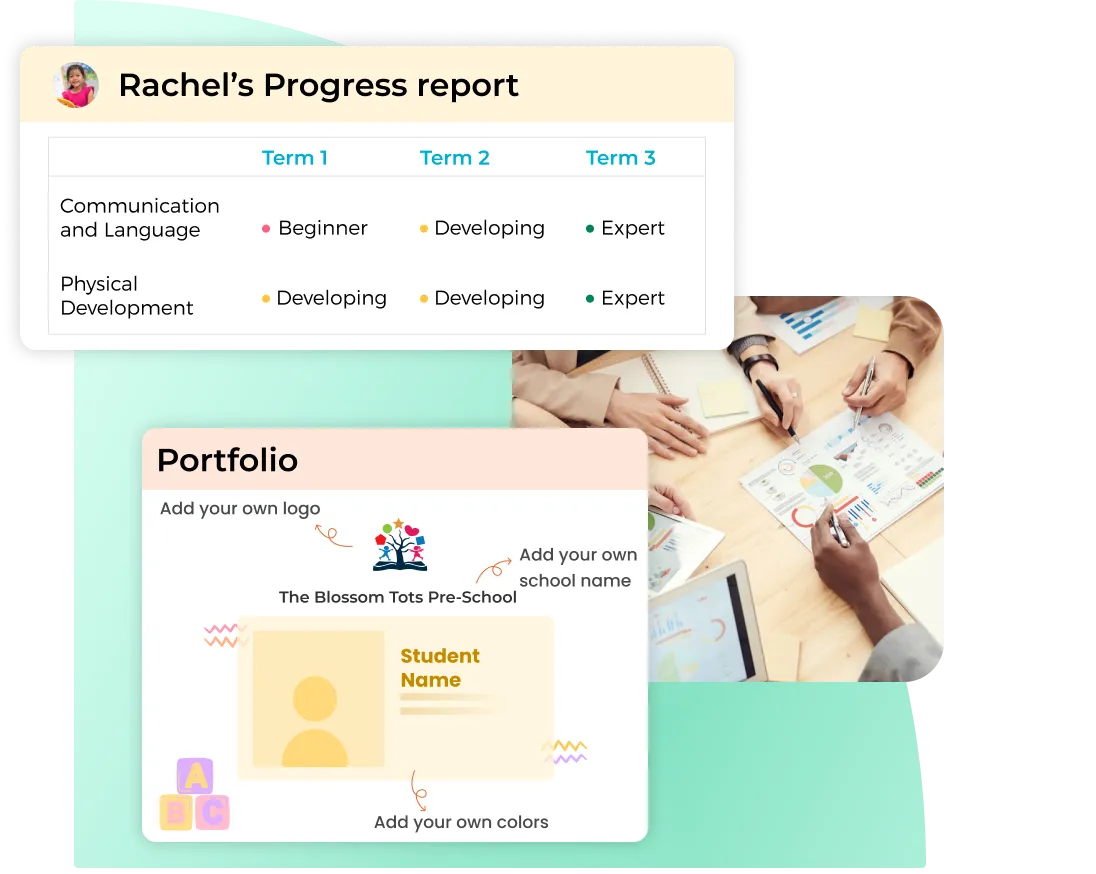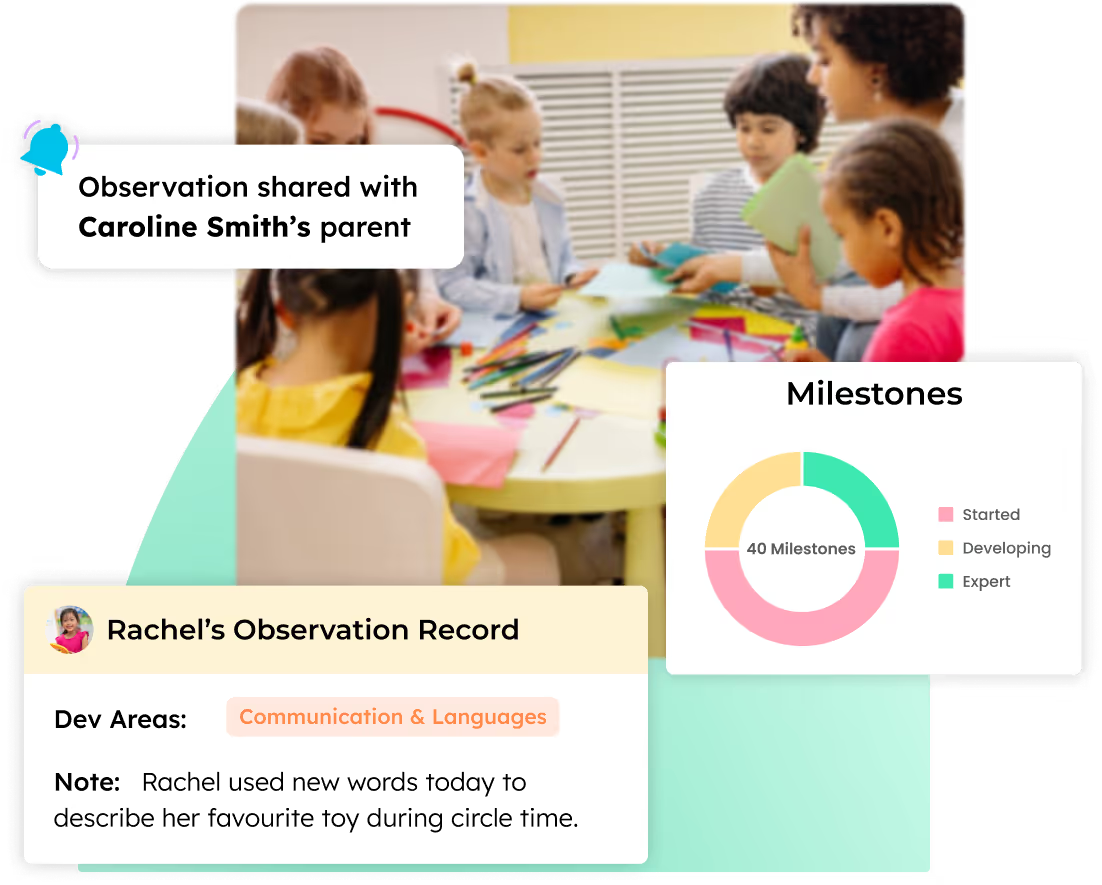Preschool classrooms buzz with energy, from curious questions to bursts of laughter. But beyond the daily chaos, educators face a quiet challenge: How do we know each child is growing the way they should?
Child development isn’t always obvious. Growth can be subtle. That’s why milestone tracking matters. Tracking how children reach milestones helps educators understand each child's unique development and notice when a different kind of support may be needed.
In our detailed guide, we’ll break down the core developmental domains, how to track progress meaningfully, and the best tool to support every child’s learning journey.
What Are Child Development Milestones?
Child development milestones are age-specific tasks that most children can do within a certain age range. These are commonly called developmental milestones and fall under key developmental domains that serve as indicators of a child's growth and learning progression.
They're not rigid checklists, but rather guidelines to help caregivers and educators spot potential delays or areas where a child may need support.

Child development isn’t about isolated skills. It’s about how different areas of growth build on each other. Most educators recognize five foundational domains:
- Physical Development & Health: Motor skills, balance, coordination, and health habits.
- Social-Emotional Development: Emotions, empathy, relationships, and self-awareness.
- Cognitive Development: Thinking, problem-solving, and memory.
- Language & Literacy: Listening, speaking, vocabulary, early reading and writing.
- Approaches to Learning: Curiosity, creativity, persistence, and focus.
Each domain supports well-rounded growth and lays the foundation for structured observations, curriculum planning, and milestone tracking.
Why Tracking Milestones Matters in ECE
Understanding developmental milestones and documenting a child’s progress helps educators adapt learning, keeps parents in the loop, and supports high-quality teaching across the classroom.
When done correctly, milestone tracking helps:
- Spot early signs of delay or giftedness
Noticing gaps or accelerations early lets teachers adjust support before patterns become problems. - Tailor daily activities to children’s needs
A child struggling with fine motor skills, for example, might benefit from more sensory or hand-strengthening tasks during learning centers. - Support individualized learning
No two learners are the same. With milestone data, educators can modify teaching strategies to suit each child’s pace and interests. - Keep families meaningfully informed
Rather than vague updates like “doing well,” teachers can share concrete progress — “Sara now uses full sentences to describe her feelings” — which builds trust and insight for parents. - Drive curriculum alignment and reporting
Milestone trends help admins evaluate program impact and ensure teaching goals are developmentally appropriate. - Enable inclusive practices
Whether supporting a child with additional needs or celebrating unique strengths, milestones offer a structured, inclusive lens for growth.
According to CDC’s developmental monitoring guidance (2024), consistent milestone tracking in early childhood improves long-term academic outcomes, classroom behavior, and school readiness. Initiatives like ‘Learn the Signs. Act Early’ and its ‘Play. Learn. Speak. Act.’ campaign provide practical screening tools and parent resources.
It also promotes shared understanding between teachers, parents, and specialists — turning daily observations into data-driven decisions. Tracking developmental milestones regularly gives teachers a clear view of both progress and potential delays.
Milestones by Age Band: What to Expect
Infants (0–12 months)
The first year is filled with rapid growth—physically, emotionally, and cognitively. Babies begin making sense of the world through their senses, movement, and early social connections.
Toddlers (1–3 years)
Toddlers are on the move—both physically and cognitively. Their growing independence is matched by stronger emotions, early social play, and a burst in language development.
Preschoolers (3–5 years)
By preschool, children are becoming more verbal, imaginative, and emotionally aware. They develop stronger friendships, early academic skills, and self-regulation strategies.
How to Track and Document Milestones in the Classroom
From daily observations to structured checklists, there are many ways educators can capture meaningful moments of growth and track progress over time.
1. Observation-Based Notes
Whether it’s a toddler sharing a toy or a preschooler retelling a story, educators often document daily interactions and behaviors to spot developmental progress. When done consistently, these notes become a powerful narrative of each child’s growth. If you’re wondering how to make these notes meaningful and usable, this guide on writing observations in early years breaks it down clearly.
2. Developmental Checklists
Checklists—whether aligned with national standards or center-specific goals—help educators track progress against expected age-level outcomes. Some programs follow CDC guidelines, while others adapt frameworks like EYFS. Teachers may fill these monthly or each term to identify emerging skills and learning gaps in a structured way.
3. Photo/Video Documentation
A picture really can be worth a thousand words. Capturing learning moments through photos or short videos helps provide visual proof of progress, whether it’s a child building a block tower or reciting a rhyme. These visual records are especially useful for sharing development with parents and supporting assessment reports.
4. Portfolio Collection
Educators often compile work samples—like drawings, handwriting, or early math worksheets—into individual folders or digital portfolios. Over time, these collections highlight growth in fine motor skills, creativity, comprehension, and more. When paired with dated observations or milestones, they create a well-rounded learning journey.
5. Parent Feedback
Families can offer rich insights into a child’s behavior outside school—from language used at home to social behavior with siblings. That’s why regular two-way communication is key. Encouraging parents to share these observations helps educators validate classroom assessments and build more complete profiles. Strengthening this partnership starts with better parent communication practices in preschool, which benefit both tracking and trust.
Customizing Milestones to Fit Your Curriculum
Not every child learns the same way — and not every preschool follows the same curriculum. That’s why building flexible learning paths matters.
If you're looking to align your curriculum better with developmental goals, here’s a secret tool to help build the perfect preschool curriculum and structure learning journeys around real child growth.
How illumine Helps You Track Child Development Milestones

From educators and admins to parents, everyone wants to know one thing: How is the child doing?
illumine’s preschool assessment software ensures that every stakeholder has complete visibility into a child’s developmental journey—without relying on scattered files, isolated observations, or disconnected tools.
For Educators: Document, personalize, and report with ease
Teachers can:
- Log milestone observations instantly, tagging them to framework-aligned or custom domains (like Communication, Math, or Physical Development).
- Upload media (photos, videos, audio) to support each observation, capturing real moments of learning.
- Track how a child’s skills evolve over time, noting progress naturally as observations accumulate.
- Auto-generate PDF learning journeys that combine observations and status updates, ready to share with parents or center heads.
Picture this: during a free-play session, a child spontaneously begins stringing rhyming words together. The teacher, recognizing the moment, quickly logs the interaction under the “Literacy” domain, adds a short voice note, snaps a photo, and saves it—all without missing a beat. It’s that easy to capture meaningful progress on the spot.
For Admins: Get classroom-wide insights and ensure report completeness

Admins have access to:
- Dashboards showing how each class or room is progressing in every development area.
- Comparison reports across rooms, terms, genders, and student cohorts to spot gaps or patterns.
- Status flags like "Report Pending," "Shared with Parent," or "Incomplete" to ensure no milestone report is missed.
- Custom milestone sets per center or program, enabling flexibility across age groups or teaching philosophies.
Say an admin is curious whether two classrooms are progressing equally in social-emotional development. With just a few clicks, illumine generates a comparison report—revealing that one group is lagging slightly. This quick insight sparks a conversation with the teaching team and leads to adjustments in circle time structure and peer engagement strategies.
For Parents: Receive ongoing insights without waiting for PTMs
Parents benefit from:
- Term-wise progress reports in PDF format with milestone tags, photos, and teacher observations.
- Visibility into exactly which skills their child is working on—without needing to ask or wait for a call.
- Real-time updates on classroom learning and development through the app.
A parent preparing for a PTM opens the illumine app and finds a complete narrative of their child’s development—highlighting milestones like improved coordination or group participation, supported with photos and teacher notes. There’s no scrambling for updates or waiting for meetings—just clarity at their fingertips.
Everyone Sees the Same Story

- Custom Domains & Milestones: Align with EYFS, CDC, or create your own.
- Real-Time Sync: Teachers, admins, and parents stay updated instantly.
- Rich Observations: Add supporting visuals and documentation.
- Visual Dashboards: Track milestone progress at child, class, or center level.
- Exportable Reports: Easy-to-read learning journeys and assessment summaries.
With illumine, there’s no guessing. Just one connected system that helps teachers focus on children, admins on outcomes, and parents on peace of mind.
Conclusion
Child development milestones are signposts — not scorecards. They help teachers and parents work in harmony to support children as they grow, explore, and express themselves. By understanding what to look for and using tools like illumine’s preschool assessment app, you can focus less on paperwork and more on what truly matters: the child’s journey.
<CTA Text: Track developmental milestones, share progress, and support growth
Button: Try illumine>
FAQs


.webp)





